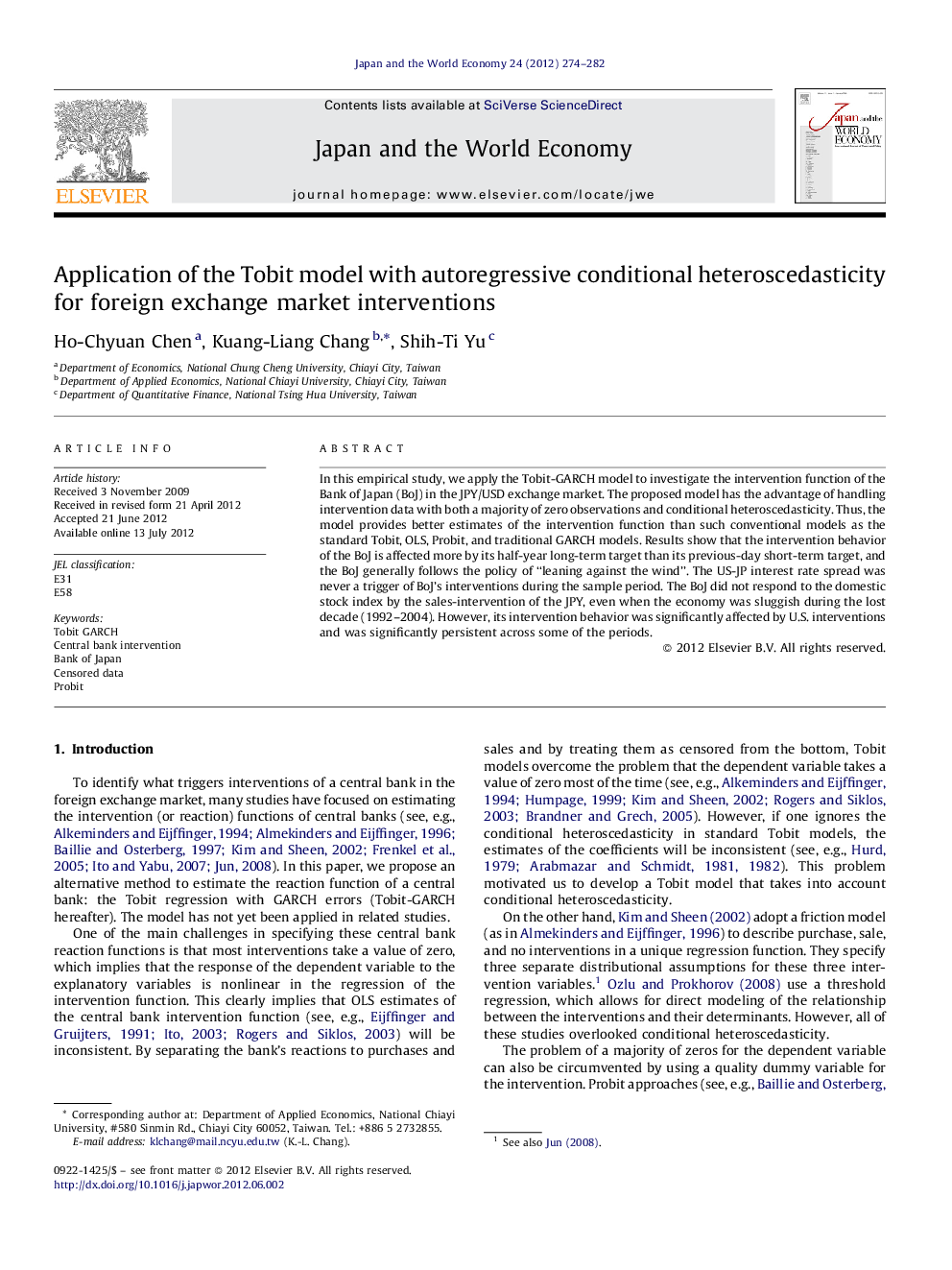| Article ID | Journal | Published Year | Pages | File Type |
|---|---|---|---|---|
| 5086293 | Japan and the World Economy | 2012 | 9 Pages |
In this empirical study, we apply the Tobit-GARCH model to investigate the intervention function of the Bank of Japan (BoJ) in the JPY/USD exchange market. The proposed model has the advantage of handling intervention data with both a majority of zero observations and conditional heteroscedasticity. Thus, the model provides better estimates of the intervention function than such conventional models as the standard Tobit, OLS, Probit, and traditional GARCH models. Results show that the intervention behavior of the BoJ is affected more by its half-year long-term target than its previous-day short-term target, and the BoJ generally follows the policy of “leaning against the wind”. The US-JP interest rate spread was never a trigger of BoJ's interventions during the sample period. The BoJ did not respond to the domestic stock index by the sales-intervention of the JPY, even when the economy was sluggish during the lost decade (1992-2004). However, its intervention behavior was significantly affected by U.S. interventions and was significantly persistent across some of the periods.
⺠The Tobit-GARCH model is used to investigate the intervention function of the central bank of Japan. ⺠The intervention behavior is affected more by its half-year long-term target than its previous-day short-term target. ⺠The center bank of Japan generally follows the policy of “leaning against the wind”.
